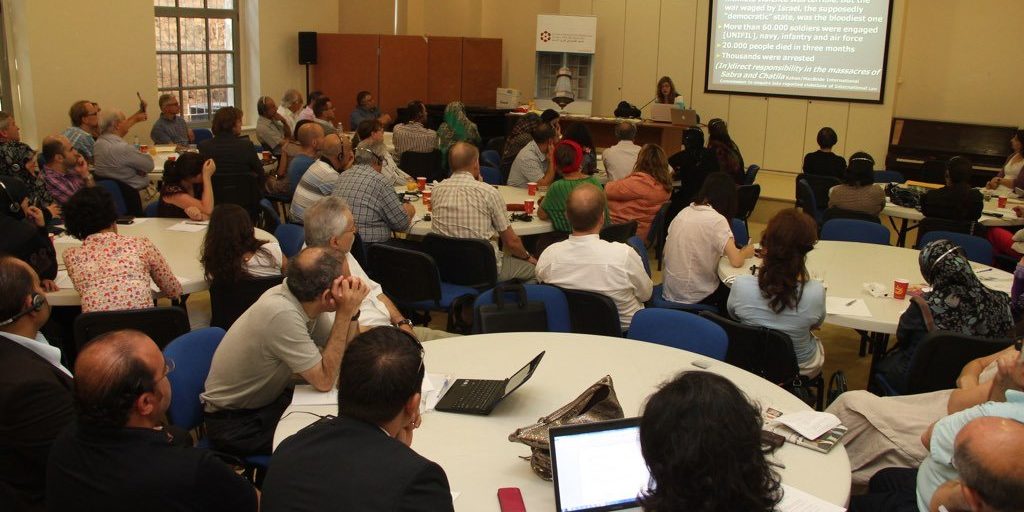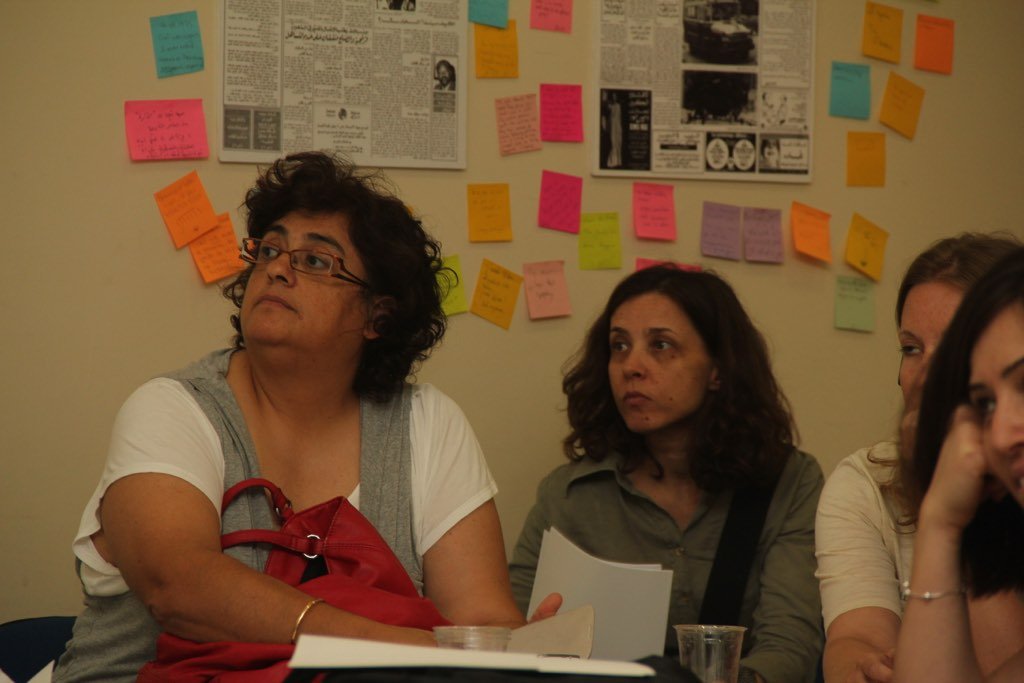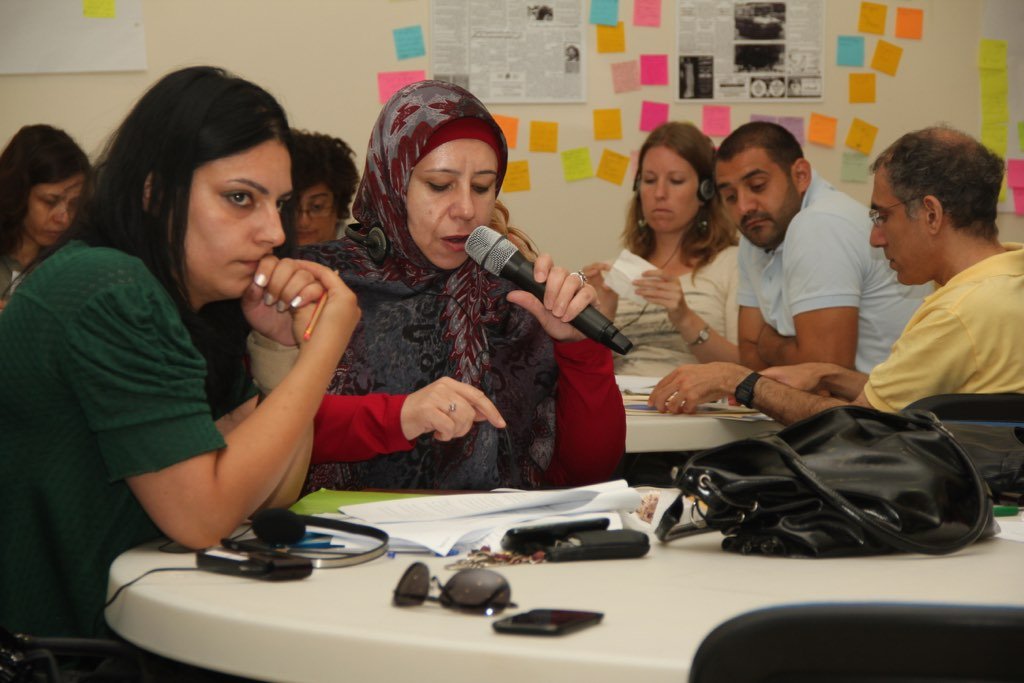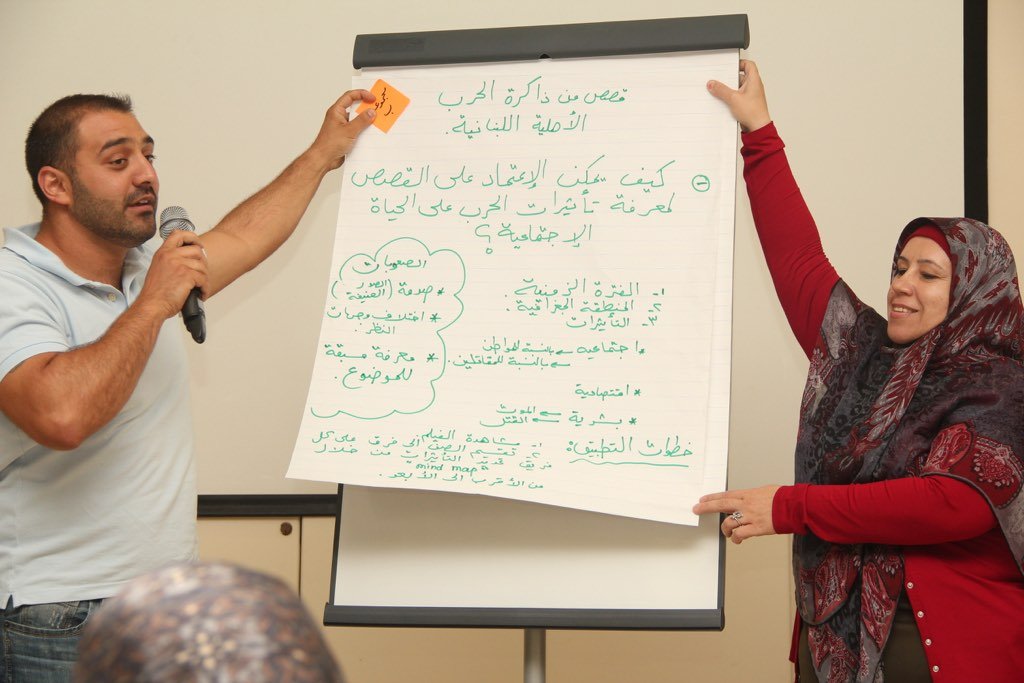On 18 – 19 June 2013, LAH organized a series of presentations on approaches to “Teaching and learning the civil war”. LAH partnered with the Centre for Lebanese Studies, the Finnish Institute in the Middle East, the Open Society and the Center for Arab and Middle East Studies at AUB. The presentations took place at the American University of Beirut and were attended by 90 history teachers, activists, academics, and researchers.
The first activity aimed to introduce the Lebanese and Finnish audiences to each others’ civil war. It opened with Carla Edde’s presentation of the Lebanese civil war that provided a background of the causes and outcomes. The Finnish team then presented the civil war that took place in Finland in 1918 over 5 months leaving 36,000 dead. They showed the changes in how the civil war was being taught in schools during the 1980s, 1990s and present day. For the second activity, LAH members Nayla Hamadeh and Khadija Al-Mawla facilitated a lesson on the causes of the 1975 – 1990 civil war. Providing a selection of resources, they asked participants to organise the causes on a flipchart paper according their relevance. Participants then put up their flipcharts on the wall. The different groups were asked to give feedback to each other by posting their comments on sticky notes on the charts developed by each group. The Finnish teachers then presented practical approaches to dealing with difficult histories of armed conflict. They emphasized that, “If dialogue is impossible, different stories with no dialogue is better than only one story”.
On the second day, Maria Georgiou, a researcher from Cyprus on history education presented approaches to using media like cartoons and “oral history” as sources of evidence to examining sensitive issues like wars. By exploring historical accounts together in an activity, Maria observed and concluded that “accounts are stories” and “the reason we have different stories is because people tell them differently”. And, so, when each historian has a different viewpoint, we see accounts as different but not necessarily inaccurate or ‘wrong’. Accounts are constructed for a particular purpose and it’s important to value that purpose rather than dismiss it. Then, Lyna Comaty presented an activity on using the front page of two newspapers in 1975 to examine the reactions or interpretations to the start of the civil war. We analyzed what the messages said and what they aimed to do, how they were different and why might they be different. The event ended by screening in cooperation with ICTJ Lebanon Carol Mansour’s movie “Badna Naaref” that depicts people’s experiences during the civil war in Lebanon. Participants were asked to write a lesson plan using the movie as the main source. The lesson plan also had to examine one historical second-order concept. Participants were asked to identify some of the challenges they might encounter in using audio-visual resources and oral history in teaching the civil war.






